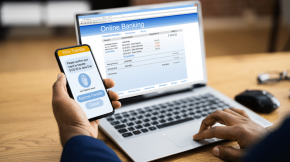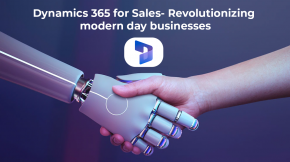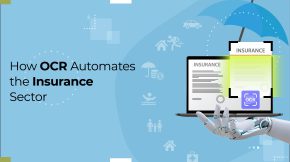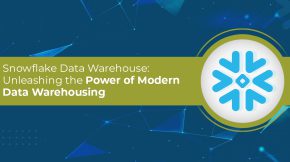What is an OCR Screening and How Does It Work?
If you run a business that deals with lots of paper documents, you know the pain and frustration of rummaging through filing cabinets to find that one invoice from 3 years ago. Or the agony of data entry as you manually type information from paper forms into your computer system.
My friend, there is a better way. A magical technology that can eliminate these headaches and transform your business. I’m talking about OCR screening.
In this post, we’ll dive deep into everything you need to know about OCR screening and how it works.
What is OCR Screening?
OCR stands for Optical Character Recognition. It’s a technology that converts different types of documents like scanned paper, PDFs, and images into editable and searchable data.
OCR screening refers to the process of taking a document, running it through an OCR software to extract the text, then converting that text into an electronic document like a Word doc or searchable PDF.
In simple terms, OCR screening takes a scanned paper document and turns it into a digital file you can edit, search, and work with on your computer.
The Problems OCR Screening Solves
Most businesses today still rely heavily on paper documents like invoices, statements, applications, tax forms, etc. Paper comes with some big problems:
Searching and finding documents is difficult – Ever dug through piles of paperwork trying to find that one document? It’s like finding a needle in a haystack, wasting massive amounts of time.
Data entry is tedious and error-prone – Manually entering data from paper forms is mind-numbingly boring. And it often leads to mistakes that cause bigger issues down the road.
Storage takes up space – All those filing cabinets take up prime real estate in your office. And paper documents are always at risk of damage from fires, floods, or other disasters.
Sharing and collaborating is a pain – Getting paper files to other people, departments or locations means printing, faxing, scanning, and emailing. It’s slow, inconvenient, and insecure.
Compliance and auditing is difficult – Organizations in regulated industries often have to store paper documents for years. Digging through boxes to find records for auditors is the epitome of inefficiency.
Analyzing data is impossible – Paper documents make gathering data or insights next to impossible. There’s no way to search across documents or extract information.
OCR screening alleviates every one of these pain points. It digitizes paper documents so you can manage them electronically instead of physically.
How Does OCR Technology Work?
OCR software uses advanced machine learning and artificial intelligence to “read” text in documents. Let’s break down the step-by-step process:
Document Capture
The first step is to get your document into digital form so software can analyze it. There are a few options here:
- Scanning – Feed paper documents through a scanner with an ADF (automatic document feeder) to convert piles of paper into image files.
- Smartphone cameras – Snap photos of documents with your phone’s camera.
- Import PDFs – Many documents are already in PDF format which can work with OCR software too.
- Email attachments – Forward email attachments directly into an OCR system.
Pre-processing
Before software can read the document, some clean up is required. The OCR system will:
- Convert to grayscale – Removes colors and converts the image to black and white.
- Smooth and despeckle – Cleans up small defects in the image like specks of dust.
- Correct skew – Straightens any crooked angles of the document within the image.
- Adjust contrast – Makes the text darker and background lighter for easier text recognition.
- Segment image – Identifies tables, images, and sections of text and separates them.
These steps enhance the accuracy of the next phase.
Text Recognition
Now the OCR engine works its magic to identify text characters. This is done by either:
- Pattern matching – Comparing shapes of text to known alphabetic patterns.
- Feature extraction – Identifying lines, intersections, and other features to match text.
Advanced OCR systems use neural networks and machine learning to mimic the human brain for incredibly accurate results.
Post-processing
Some final clean up produces the final output document:
- Format reconstruction – Recreates the original formatting like headings, lists, and tables.
- Text output – Generates the output file into popular formats like PDF, Word, Excel etc.
- Data export – Exports structured data from forms into XML, CSV or databases.
- Verification – Flags any low confidence areas to be reviewed by a human.
After post-processing, the document is machine-readable and searchable – completely transformed by OCR!
The Benefits of OCR Screening
Implementing OCR scanning delivers game-changing advantages:
Streamlined Document Management
OCR screening eliminates the hassles of paper filing systems. All documents become digitized assets that are:
- Searchable – Instantly find any document with a keyword search.
- Shareable – Send, collaborate on, and work with documents from anywhere.
- Organized – Manage documents in digital folders just like your computer system.
Faster Processes
Without paper slow downs, your processes will accelerate:
- Data entry takes seconds instead of hours
- Documents are retrieved immediately
- Routing documents around your organization is seamless
- Audits and discovery requests are simple
Reduced Costs
OCR software delivers huge cost savings:
- Less paper, printing, and storage costs
- No more overnight shipping fees for documents
- Reduce expense of data entry overhead
Improved Data Analysis
Digital documents allow you to extract and analyze data like never before:
- Search across documents to uncover trends and insights
- Use forms processing to collect structured data
- Integrate OCR data into business intelligence systems
- Apply analytics for smarter decisions
Enhanced Security
Paper is easily lost, stolen, or damaged. OCR documents are secure:
- Control access with login credentials
- Encrypt data at rest and in transit
- Set user permissions for extra security
- Recover lost documents easily from backups
Regulatory Compliance
Heavily regulated industries like finance, legal, and healthcare often have strict electronic document retention rules. OCR tools help:
- Digitize paper archives to meet e-storage mandates
- Audit trails track document access, edits, sharing
- Redaction features remove confidential data
- CCPA/GDPR compliance is easier with digital systems
With all these benefits, OCR screening is a nobrainer upgrade for your organization.
How to Choose the Right OCR Software
If you’re sold on OCR screening, the next step is finding the right OCR solution for your unique needs. Here are some key factors to evaluate:
Accuracy Rates
Look for accuracy rates of at least 90-95% – anything lower will require too much human review and correction. Accuracy improves with advanced machine learning and neural networks.
Document Types Supported
Make sure the OCR tool can handle all the document types you work with including scanned paper, photos, PDFs, forms, ID cards, passports, etc.
Image Quality Features
Good OCR software will have preprocessing features like deskew, autorotate, cropping, and despeckle to improve accuracy.
Integration and Export Options
You’ll want flexible output options like searchable PDF, Word, Excel, XML, database export, and integration with business systems via API.
Languages Supported
If you deal with international documents, find an OCR tool that supports multiple languages for accurate foreign character recognition.
Manual Review Workflow
Even the best OCR will need some human verification. Look for built-in review workflows to correct and approve automated OCR results.
Security and Compliance
Your data should be safe with features like encryption, access controls, audit logs, data retention policies, and regulatory compliance.
On-Premise vs Cloud-Based
Figure out if you want the OCR solution installed locally or hosted in the cloud. Both have pros and cons around control, maintenance, speed, security, and cost.
Vendor Reputation and Support
Pick an established vendor known for excellent tech support in case you need help. Make sure they offer training resources as well.
Evaluating solutions on criteria like this will ensure you get the right OCR scanning technology tailored to your specific business needs.
OCR Screening is a Must for Forward-Thinking Organizations
If you made it this far, you now understand why OCR technology is so revolutionary. Converting documents from physical to digital unlocks game-changing benefits:
- Streamlined, automated document management
- Faster business processes
- Lower costs
- Better analytics and decisions
- Enhanced compliance and security
Implementing OCR scanning solutions will future-proof your organization for continued success. But don’t take my word for it. Experience the benefits yourself with a free trial of Beyond Key’s market-leading OCR scanning services.
Beyond Key offers state-of-the-art OCR capabilities powered by advanced AI and machine learning. We make it fast and easy to turn your paper documents into usable digital files. For over a decade, we’ve helped forward-thinking organizations eliminate archaic paper processes to enhance efficiency, insight, and growth.
Get started with a free OCR trial today!
Our team of experts is ready to answer any questions and recommend the best OCR solutions to meet your needs. Contact Beyond Key now to discover why we’re trusted by so many leading enterprises. Unchain your business from paper – the future of efficient document management is here!




















